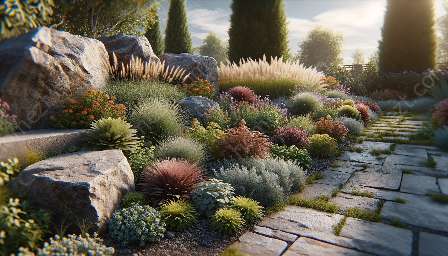Rock gardens are a unique and beautiful feature in landscaping, showcasing a blend of ruggedness and natural beauty. Proper maintenance and care are essential to keep a rock garden looking its best, and pruning plays a crucial role in its upkeep.
Understanding Rock Garden Pruning
Pruning in a rock garden involves the careful trimming and shaping of plants to enhance their appearance and promote healthy growth. It is essential for creating an aesthetically pleasing landscape that complements the natural elements of the stones and rocks.
Benefits of Pruning in Rock Gardens
Pruning offers several advantages when it comes to rock gardens. It helps in controlling the size and shape of plants, promoting better flowering, and preventing overcrowding. Proper pruning also improves air circulation and sunlight penetration, which are crucial for the overall health of the garden.
Pruning Techniques for Rock Gardens
1. Selecting the Right Tools
Before initiating the pruning process, it's important to have the right tools at hand. Sharp and clean pruning shears, hedge trimmers, and loppers are some of the essential tools for rock garden pruning.
2. Timing and Frequency
Understanding the specific pruning needs of each plant in the rock garden is vital. Different plants may require pruning at various times of the year, such as after flowering or in late winter. Regular maintenance pruning helps in keeping the garden tidy and in good condition.
3. Shaping and Thinning
Shaping plants through pruning is vital in maintaining the overall visual balance of the rock garden. This involves selectively trimming branches and foliage to achieve the desired form and structure. Thinning out overcrowded areas allows for better air circulation and prevents disease.
4. Deadheading
Removing dead or spent flowers, a practice known as deadheading, is crucial for encouraging continuous blooming in many flowering rock garden plants. This technique redirects the plant's energy towards new growth and blooming, enhancing the overall visual appeal of the garden.
5. Pruning Ground Covers
Ground cover plants in rock gardens require special attention to maintain their low, spreading form. Regularly pruning them helps in preventing them from encroaching on other plants and areas within the garden, ensuring a neat and well-defined appearance.
6. Careful Consideration of Alpines
For alpine plants in the rock garden, pruning should be done with extra care, as these delicate plants require precision and gentle handling. Proper pruning helps in rejuvenating these plants and promoting their natural growth habit.
7. Maintenance of Rock Features
Pruning also extends to the rock elements within the garden, such as trimming overhanging branches and removing debris or accumulated organic matter. This ensures that the rocks remain prominent and aesthetically appealing.
Conclusion
Rock garden pruning techniques are essential for maintaining the health, beauty, and balance of these unique landscapes. By understanding the specific needs of plants within the rock garden and employing proper pruning methods, enthusiasts can create and sustain a captivating and harmonious outdoor space.








































